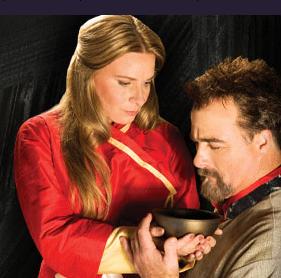Never had a composer dared to use a musical metaphor so blatantly and yet so subtly until Richard Wagner began Tristan and Isolde in 1857. Many operatic lovers had met tragic ends, but Wagner unprecedentedly wrote music that languishes and dies right along with them. Just as T & I never consummate their forbidden passion, so his score wanders, surges, agonizes, and seems only to come to rest at the very end as his heroine expiresafter an orchestral orgasmin a luminous B major. Shes an Irish princess being forced to wed against her will; hes the knight tasked with bringing her to the wedding. In her anguish, Isolde takes what she thinks is poisonoops! Her maidservant switched it for a love potion. (Also, never had a composer made anything so transcendent out of such a dopey farce premise.) Clifton Forbis and Annalena Persson play the title roles in a Seattle Opera production directed by Peter Kazaras that will make use of the companys visual projection systemand, everyone hopes, atone for some of the legendary weirdnesses in SOs last staging of the opera in 1998. GAVIN BORCHERT [See Gavin’s review.]
Sat., July 31, 6:30 p.m.; Wed., Aug. 4, 6:30 p.m.; Sat., Aug. 7, 6:30 p.m.; Thu., Aug. 12, 6:30 p.m.; Sun., Aug. 15, 2 p.m.; Wed., Aug. 18, 6:30 p.m.; Sat., Aug. 21, 6:30 p.m., 2010




